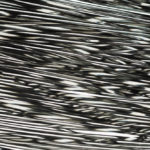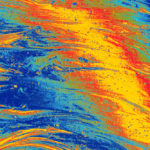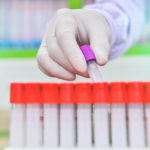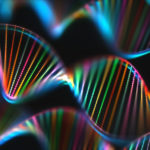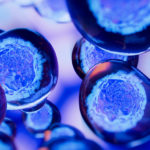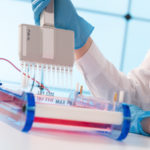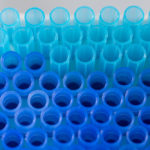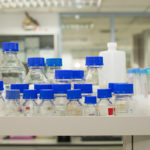Microscopy and Imaging
The lac Operon as a Microscopy Tool
The lac operon is an amazing tool in molecular biology. It has been used for decades to turn on protein expression in an inducible manner with IPTG. The result is synthesis of vast amounts of protein to be used as you wish. While the lac operon is an amazing tool for protein production, it is…
Read MoreThis One’s Upside Down! Inverted and Stereo Microscopes in Bioscience Laboratories
Most of the microscopes you will encounter in your laboratories will be ‘upright’. In other words, they are assembled (from top to bottom) in the order of; eyepieces, objectives (on revolving nosepiece), stage, sub-stage condenser, diaphragm and base. However, there are two other types of light microscopes you will perhaps encounter (and use) and it…
Read MoreCounterstaining for Immunohistochemistry: Choices, Choices…
Counterstaining can have a big impact on your histology result. This short guide will introduce you to some available counterstains providing you with a few more choices.
Read MoreImmunohistochemistry Basics: Blocking Non-Specific Staining
Achieving a good immunohistochemistry signal-to-noise ratio involves many factors, including a good blocking protocol. Read on to learn about blocking non-specific staining in IHC.
Read MoreHaematoxylin and Eosin 101: Part Two- Recipes and Materials
Following on from the first part of the H and E 101 articles, here are the materials and recipes you’ll need for your own H and E workstation (assuming you don’t have access to a histology lab). Many of the chemicals listed below are toxic and/or harmful. Use PPE when handling/storing, follow SOP’s in your…
Read MoreHaematoxylin And Eosin 101: Part One – Method And Tips
Haematoxylin and Eosin staining is the most common staining in the modern (and old!) histology lab. This staining technique gives an overview of the structure of the tissue and can be used in pathological diagnosis. This article follows on from Nicola’s introduction, but we’ll take an in-depth look at the stains, chemistry and method to…
Read MoreHow To Fix Isolated And In Situ Primary Cells
Unlike immortalized cells lines, primary cells can only be kept in cell culture for a finite period of time, if at all. Therefore, you often need to obtain primary cells directly from an animal source. After which, you may fix and image the primary cells in situ (as part of the whole organ), or you…
Read MoreLaser Capture Microdissection: Get it Out!
Imagine you are studying a very interesting new protein. You know in which cell type the protein is expressed, yet that specific cell type constitutes only a small minority among a large collection of other cells in the tissue. Examples are endothelial cells in tumors, macrophages within an organ or a specific structure in the…
Read MoreHow To Fix Suspension Cells For Microscopy And Imaging
Fixing suspension cells for imaging can be trickier than fixing adherent cells, as they can’t be cultured on a coverslip. Discover how you can stick them down with the help of centrifugation.
Read MoreCell and Tissue Fixation 101- Top Tips For Protocol Optimization
You just can’t put raw tissue or cell samples on your slides and expect good histology results! Instead you must preserve or ‘fix’ your samples. Fixing ensures that your cell structures stay intact and that your antigens are immobilized. Ideally, fixation would also still permit unfettered access of your antibodies to your antigens. However, as…
Read MoreThe Joy Of Shared Microscopes – 10 Things Which Really Piss Me Off!
The theory behind the idea of having shared microscopes is a good one, but, in reality, this can sometimes mean you have to put up with the dirty habits of your fellow scientists and researchers. And some of your lab mates turn out to be really mucky! Here’s my Top 10 of things which really…
Read MoreSo, You Think An Electron Microscope Is There To Make Things Look Bigger?
“Well, of course”- I can hear someone saying. “It can make things look as much as 200, 000 times bigger”. Problem is, the first sentence is wrong, and the second one is meaningless! On quick and thoughtless answers to simple questions I had just been admitted as an MSc student at UCL, and was attending…
Read MoreIf We Are 3-D, Should We Grow Cells In The Same Dimensions? Microscopic Analysis In 3-D.
“Do we use a monolayer or 3-D cell culture for our experiments?” A simple, yet puzzling question asked by my group leader while I was working on a drug development project at the University of Abertay Dundee. How do you answer such a question? Just read on to find out! Monolayer vs spheroid One of…
Read MoreAntigen Retrieval Techniques For Immunohistochemistry: Unmask That Antigen!
Did you know fixation can mask antigen sites in your sample? Discover how you can unmask them and get your signal back on track!
Read MoreFluorescent Tyramides In Histology: A Versatile Approach For Multiplex Molecular Tissue Probing
Fluorescent tyramides offer exquisite sensitivity, are easy to use, and are versatile. Find out how to use them to brighten up your research.
Read MoreI’m Sticking With You: Four Coatings To Help Cells Stick To Microscopy Slides
Have you ever isolated a great little population of cells after days or months of trying, got truly excited about doing some immunofluorescence with them only to find out (at the very end) that all your cells washed away?! If this has happened to you, then look no further; we will introduce you to some…
Read MoreFive Tiny Histology Pleasures
Histology offers some simple yet fulfilling moments. Find out our top 5 simple histology pleasures and see if you agree!
Read MoreA Semi-intelligible Explanation Of Structured Illumination Microscopy (SIM)
If you found our previous section on super resolution interesting, you may be curious for a more detailed explanation behind some of the techniques. Introduction to this counterintuitive method Of the super-resolution microscopy techniques, structured illumination microscopy (SIM) is arguably the most counterintuitive to grasp. Of course, that’s what makes it so much fun! To understand how…
Read More10 Uses For An Old Microscope
Following on from our previous article, here are some suggestions for an old microscope (should you happen not to destroy it!). 1. Museum piece Start your own mini scientific instruments museum. Before you know it, you be raking through the old skips and dumpsters at your institute looking for exhibits. 2. Teach kids Teach your…
Read More10 Easy Ways To Wreck Your Microscope
Do you see what I see? Maybe not, if the microscope is wrecked in one of these ten ways when you… 1. Carry the microscope incorrectly. A death-grip on anything but the arm and the base almost guarantees that it will slip away, crashing onto the floor to break in pieces. You don’t want a microscope which…
Read MoreHistology Fixatives: What Do They Actually Do To Your Samples?
Do you know what your histology fixatives are really doing to your samples? Read on to learn what happens to tissue treated with two common fixatives.
Read MoreDon’t See Red! Use Oil Red O- A Histological Stain For Fats And Lipids.
What Does Oil Red O Stain? Oil Red O (‘ORO’) is used to demonstrate the presence of fat or lipids in fresh, frozen tissue sections. Introduced by French in 1926, ORO is a fat-soluble diazo dye, and is classified as one of the Sudan dyes which have been in use since the late 1800s. Like…
Read MoreHow To Name Image Files So They Actually Make Sense – The Good, The Bad And The Ugly
I have a dear friend and collaborator whose image file names follow this format: aaaa5kk.tif, aaaa5kkk.tif, aaaa5kkkk.tif, aaaa6p3kkkkkkk.tif, etc. We have collaborated together on several projects, and I dread the days I have to go back through the files and look for a particular image. I am sure that these names have some meaning to…
Read MorePrussian Blue- A Histology Stain For Iron
Want to detect iron in your samples? You need Prussian blue! Discover the incredible sensitivity of this stain and how to use it.
Read MoreA World Where Mathematics And Microscopy Meet: Geometric Probability In Stereology Part Two
Following on from Part 1, we’ll now take a look at the actual use of geometric probability in stereology, as well as the advantages and disadvantages of this technique. As you’ll know from the introduction (here), stereology looks at the relativity between an object and its sections, while geometric probability allows a researcher to expand…
Read MoreA World Where Mathematics And Microscopy Meet: Geometric Probability In Stereology Part One
The study of geometric probability in stereology may seem like a large, overwhelming area of focus but, don’t panic, it’s not! In fact, it is a very specific field that is likely to come easy to those that excel in mathematics or science (yes that means you). However, the concept is not one that most…
Read MoreOvercoming The Limits Of Light: A Guide To Super Resolution Microscopy Part 2
In Part 1, we looked at diffraction limits and how these can be overcome using Super-Resolution Microscopy techniques. We covered Single Molecule Localization Techniques, Structured Illumination Microscopy and Stimulated Emission Depletion. In this second part, we’ll take a look at Near-Field and Dual Objective Methods as well things to consider before buying a system. Near-field…
Read MoreGetting Those Chromosomes To Spread- A Beginner’s Guide To Meiotic Chromosome Spreads
So you want to do meiotic spreads do you? Maybe it’s to check if meiosis is progressing the way it should, or even to look for sites of DNA damage. Whatever the case this technique can be a little tricky at first, but once you learn a few tricks it’s like riding a bicycle- so…
Read MoreOvercoming The Limits Of Light: A Guide To Super Resolution Microscopy Part 1
If you’re reading our Microscopy and Imaging Channel here on BitesizeBio, you might have heard about the new techniques which fall under the umbrella of ‘Super-Resolution Microscopy’. In her recent article, Cynthia introduced us to the limits of resolution and how this can be overcome. Question time You may have more questions; What are the…
Read MoreCongo Red – A Special Stain For Alzheimer’s Disease
Discover interesting facts about Congo red and it can help us understand Alzheimer’s disease.
Read MoreSTORM, PALM And fPALM- The Alphabet Soup Of Super-Resolution Light Microscopy
Why do I see a cloud? When you are looking at protein localization within a cell, have you ever wondered why you see a cloud of fluorescence rather that several individual fluorescent points? Well, light microscopy has a theoretical resolution limit of 200 nm. This means that in theory, to resolve two points as being…
Read MoreAcid Fast: A Histology Tool To Detect Bacteria and TB
Acid-fast stain (AF) is a special staining technique used in the histology lab. Discover which bacteria this stain detects, the history behind it, and how it works.
Read MoreHow To Find Fungi In Your Histology Samples- Go For GMS!
Gomori’s methenamine silver is a special histology stain for detecting fungi. Find out how and why you might want to use this stain in the lab.
Read MoreImmunohistochemistry- PAP, APPAP and Sandwiches!
You’ll give me an (enzymatic) complex! Following on from Part 1 of this article, let’s start by having a look at the two most popular enzymatic ‘sandwich’ methods; The Peroxidase anti Peroxidase method (PAP). The PAP method was the first sandwich method that I used and involves three main stages- application of primary antibody, secondary…
Read MoreImmunohistochemistry- Direct vs. Indirect Methods, and a Golden Rule
In my previous article I covered different immunohistochemical staining techniques at a superficial level. In the following articles I will start to explain these technologies in a bit more detail and in which situations they should be applied. All of the following will involve additional stages when applying them, for example- serum blocking, protein blocking,…
Read MoreAn Introduction To Stereology
According to the International Society for Stereology, the area of scientific study encompassed by this term is that which analyzes solids. If that all sounds a bit too much like materials science, then for us microscopists, it’s really about the review of three-dimensional objects (mainly tissues) by making horizontal and vertical incisions. Stereology can be…
Read MoreImmunohistochemistry- an Introduction, Techniques and an Evolution Towards Robots!
The last two decades have seen a dramatic increase in the number of publications using immunohistochemistry (IHC) as a research tool to identify the spatial location of proteins of interest within cells, tissue sections and whole-mount preparations. Grinding and binding The advantages over ‘grind and bind’ methods are apparent, but the very best results will…
Read MoreStarry Starry Night? No, Warthin-Starry Stain!
Need to stain Gram-negative organisms? You should consider the Warthin-Starry stain.
Read MoreGuide to Buying a Fluorescent Microscope Part 2
In Part 1 of this Guide, we learned about the importance of support, resources and objectives when choosing a fluorescence microscope. We continue this guide by looking at everything from filters to warranties. You should get these filters… Quality of the barrier filters and dichroic mirrors are the deciding factor on how well you can…
Read MoreGuide to Buying a Fluorescent Microscope: Part 1
You’re a senior postgraduate student, a post doc or a junior PI with little knowledge on microscopes and someone between Senior PI /Dean level approaches you with this: “We have now the funds to buy the fluorescence microscope someone once told me we need. Can you handle this please? Oh, by the way, the funds…
Read More
